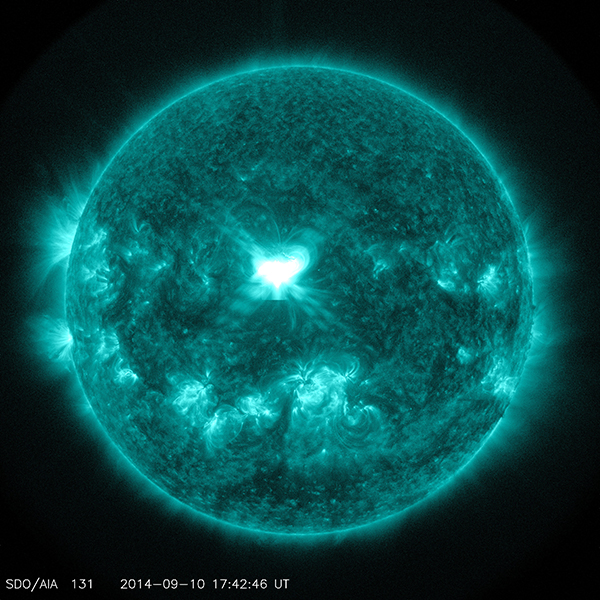Solar Flare on Direct Path to Earth

An X1.6 class solar flare flashes in the middle of the sun on Sept. 10, 2014. This image was captured by NASA’s Solar Dynamics Observatory and shows light in the 131 Angstrom wavelength, which is typically colorized in teal.
Photo by NASA/SDO
According to NASA an intense solar flare peaked today around 1:48 EDT and images were captured by NASA’s Solar Dynamics Observatory. Solar flares are common explosions on the Sun’s surface that emit powerful radiation. This particular flare is different in its high intensity and its direct path toward planet Earth. The harmful radiation fortunately cannot pass through Earth’s atmosphere, however satellites and communication signals can be disrupted. It is unclear as of the time of this article exactly when the flare’s peak intensity will reach our planet, though such an event typically takes somewhere from a few hours to a few days.
Radiation bombarding the Earth’s atmosphere is what causes the phenomenon known as Northern Lights. Normally only visible in the most northern parts of the world, this direct hit could make viewing possible much further south.
NASA – “This flare is classified as an X1.6 class flare. “X-class” denotes the most intense flares, while the number provides more information about its strength. An X2 is twice as intense as an X1, an X3 is three times as intense, etc.”











